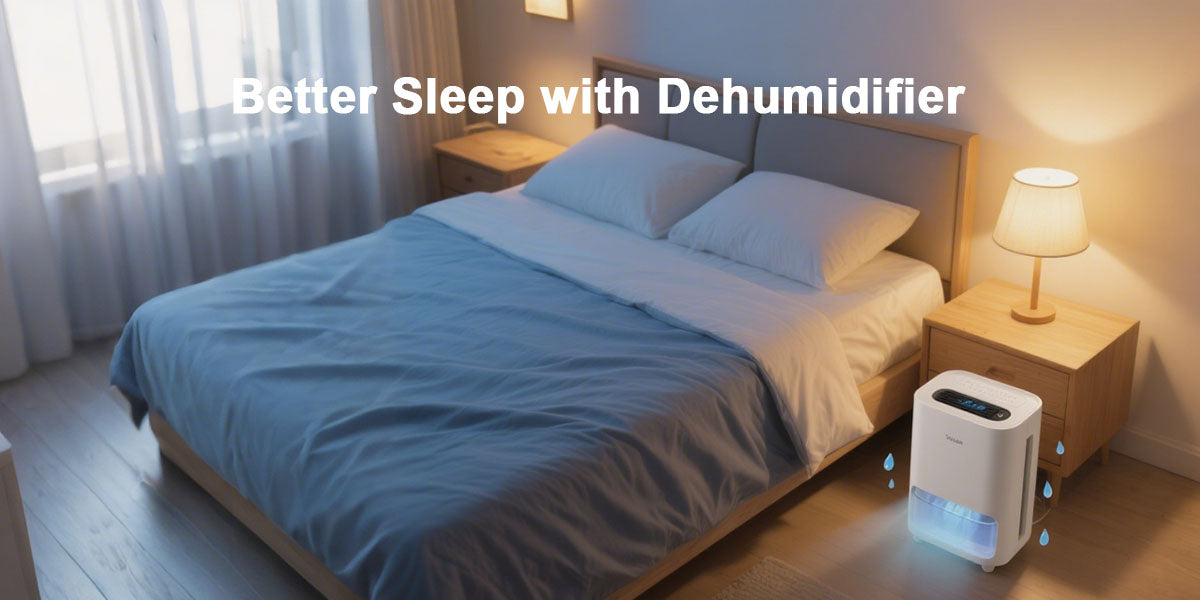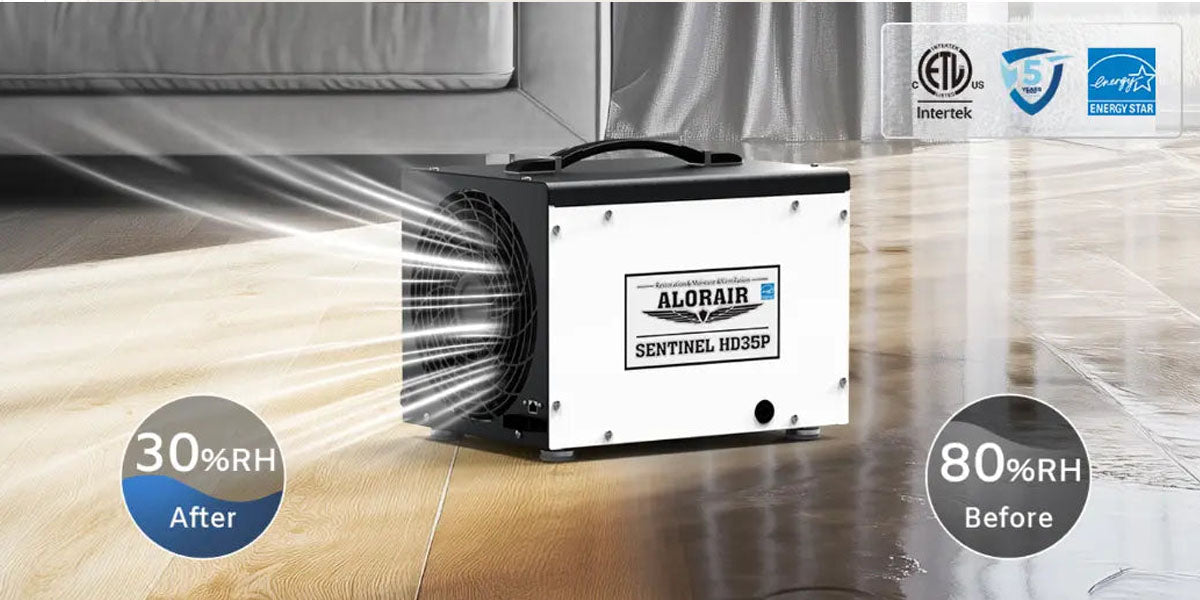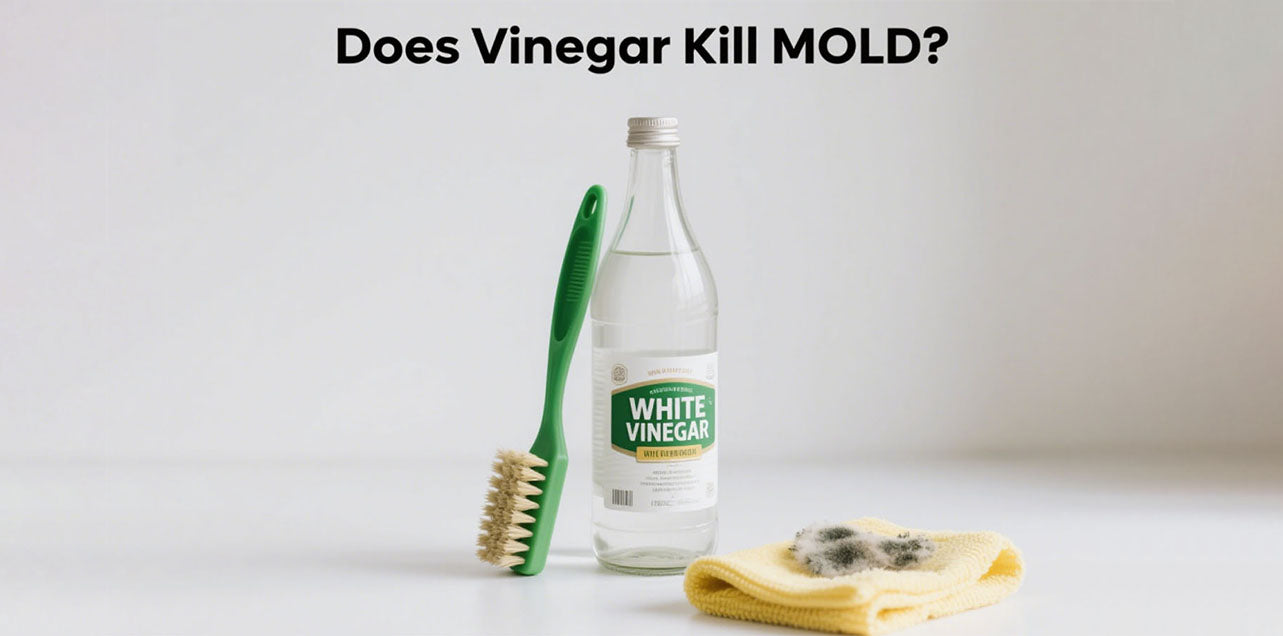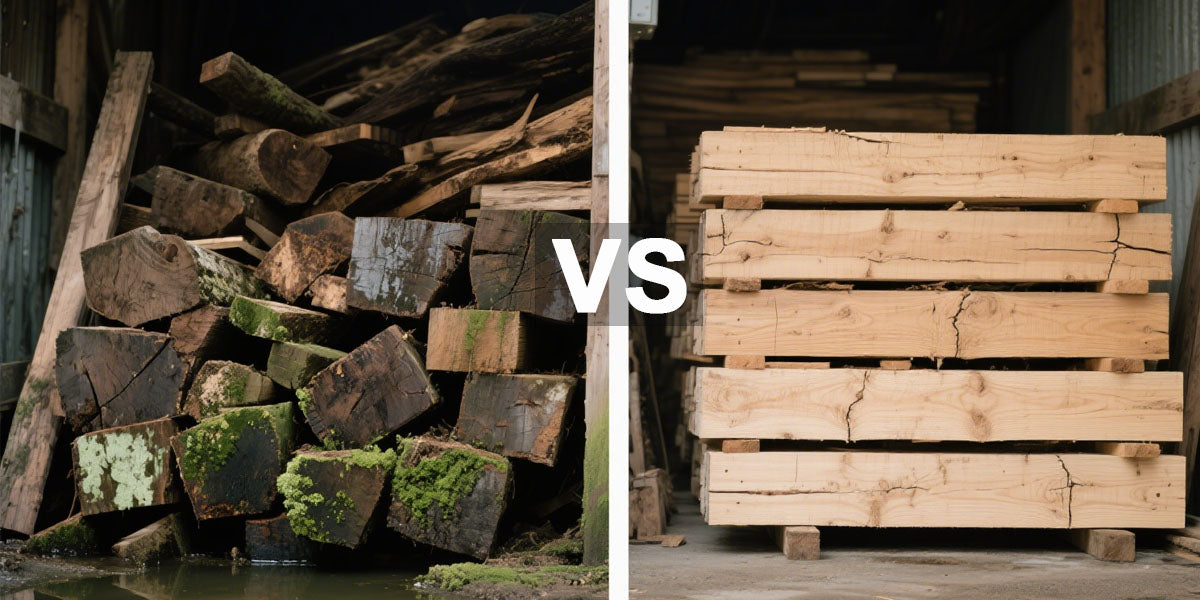The answer is yes, vinegar can kill mold. Studies have shown that vinegar is useful for extracting usual household molds and avoiding mold buildup on fruits. However, it isn’t efficient at killing every variety of mold. This guide explores whether vinegar is effective, how to use it, and when to opt for more powerful solutions.
Can Vinegar Kill Mold?
Yes, vinegar can kill mold. That dusty vinegar bottle inside your cupboard is a strong tool.
White distilled vinegar carries 5-8% acetic acid, and this acid disturbs mold cell membranes, slowing growth. Killing mold with vinegar performs particularly well on non-porous surfaces like metal, tile, glass, and sealed wood.
Vinegar contains antibacterial and antifungal characteristics, so it can be a budget-friendly and efficient cure for several kinds of mold. A 2015 review in the International Journal of Environmental Research and Public Health verifies that vinegar successfully blocked fungal species such as Penicillium chrysogenum.
Also, professionals at JJ&S Environmental stated that vinegar _ a light acid, “kills around 82% of mold species” and can attack mold at its core on surfaces such as tile and walls. That acetic acid in the vinegar contains an adequately powerful 2.5 pH.

This powerful pH level allows vinegar to disturb and hinder the growth of fungi, mold, and further microorganisms.
But, vinegar has limits:
-
Vinegar can wear out or blacken particular materials. For example, it can tone down stone and harm undone wood.
-
It is unable to enter porous surfaces such as insulation, drywall, or unsealed wood.
Briefly, vinegar for mold is efficient on solid surfaces but insufficient for porous, deep outbreaks.
Does vinegar kill mold on walls?
Yes, vinegar kills mold on non-porous walls; however, it does not access mold within drywall. That said, you can securely kill mold on the surface of drywall.
Does vinegar kill mold on wood?
Vinegar can lower surface mold on treated wood, but it is inefficient on porous or unfinished wood.
Does vinegar kill mold on fabric?
Vinegar might clear light surface mold on washable fabrics; however, ineffective for deep mold enclosed in fibers.
Why Mold Grows Indoors?
Mold develops under three main conditions: darkness, dampness, and a shortage of air exchange.
-
Obvious indoor mold varieties include Cladosporium, Penicillium, Aspergillus, and black mold. These fungi thrive on organic matter like wood, fabrics, and drywall.
-
Mold multiplies fast when the relative humidity exceeds 60% and the temperature fluctuates between 20–30°C (~68–86°F).
-
Badly ventilated spaces, such as crawl spaces, bathrooms, and basements, mostly maintain these conditions.
Humidity control is a necessity. The U.S. Environmental Protection Agency (EPA) and the Centers for Disease Control and Prevention (CDC) highlight maintaining indoor moisture at or under 50% to avoid mold formation.

How to Use Vinegar to Treat Mold (Step-by-Step)?
How to clean mold with vinegar? Killing mold with vinegar is effective for small regions on impenetrable surfaces. Stick to these steps to clean mold with vinegar securely and efficiently:
-
Put on protective gear: Utilize eye goggles, gloves, and a mask to prevent touching with mold germs and vinegar.
-
Put in undiluted vinegar in a spray bottle: Use white distilled vinegar with 5-6% acetic acid, which professionals say is efficient at destroying the majority of household molds.
-
Spray it kindly on the mold: Wet the place and let the vinegar in there for at minimum 60 minutes, prolonged soak time improves effectiveness.
-
Scrub and wash: Utilize a microfiber cloth or scrub brush, wash with water, and dry out the space thoroughly. Dampness left behind promotes mold rebirth.
-
Optional: Re-spray and air-dry: Re-spray the area with vinegar solution and allow the chemicals to dry up normally to assist in killing any lingering mold and prevent redevelopment. The powerful odor of vinegar will disappear in a few hours.
How long does it take vinegar to kill mold? Typically, vinegar requires at least 60 minutes to kill mold on non-porous surfaces. Leave it there undisturbed before scrubbing for best results.
When Vinegar Isn’t Enough?
Vinegar provides a good option for surface mold; however, it is not a cure-all. It cannot get to secret mold that stays within drywall, under flooring, or behind walls, areas where surface treatment does not reach.
Besides, apply this technique just when you notice surface mold clearly and the space calculates less than 10 sq ft. This is because the Environmental Protection Agency (EPA) endorses contacting a professional if the affected region is bigger than 10 sq ft. or approximately a 3-foot by 3-foot square.
That said, to put a stop to mold returning, it is key to control indoor humidity. So, combine expert mold treatment with moisture control tools like commercial dehumidifiers, crawlspace dehumidifiers, and whole-house dehumidifiers. They help keep indoor humidity under 50%, preventing mold regrowth and safeguarding home surfaces.
Other Ways to Get Rid of Mold
Vinegar performs well on solid surfaces; however, other solutions provide improved results in distinct scenarios:
Hydrogen Peroxide
A 3% hydrogen peroxide solution destroys surface mold and aids in cleaning marks. Besides, it accesses more deeply compared to vinegar and stops rebirth.
The researchers closed one study with the remark that hydrogen peroxide possesses the ability to disinfect fungi on solid surfaces but is not effective for porous surfaces.
Borax
A mixture of borax and water removes mold and leaves remaining antifungal characteristics without harsh fumes. It functions on tile, masonry, and wood.
Commercial Mold Removers
These products mostly have bleach or quaternary ammonium compounds and efficiently kill mold on solid surfaces and provide instant results.
Steam Cleaning
Intense temperature steam destroys mold on carpets and fillings. Also, it eliminates mold without chemicals.

Prevention: Keeping Mold from Coming Back
The mold prevention demands humidity control. The CDC advises maintaining indoor humidity under 50% to stop mold growth. Running dehumidifiers is the most efficient, durable measure.
Aloraircrawlspace dehumidifiers keep balanced humidity even in invisible or unapproachable places. Moreover, confirm appropriate ventilation in kitchens, bathrooms, and laundry rooms. Install exhaust fans where required and fix plumbing leaks instantly to avoid extra moisture.
Also, combine dehumidifiers with air purifiers to lower mold spores in the air and observe humidity through a digital hygrometer. Continuous readings over 60% indicate a mold risk.
Final Thoughts
So, does vinegar kill mold? Absolutely, vinegar can kill surface-level mold on solid, nonabsorbent materials. But, vinegar alone is not sufficient for deep or extensive mold problems. For insulation, fabrics, electronic screens, metals, and hidden mold, more strong strategies or expert help are required.












